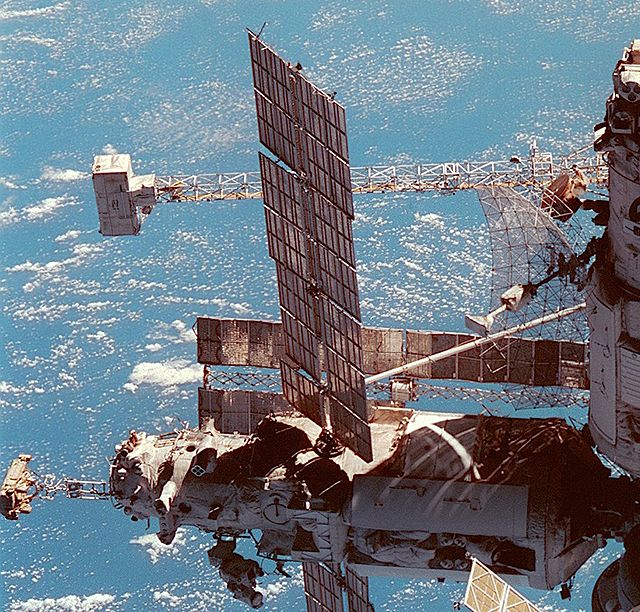Soyuz TM-2 was a crewed spaceflight to the Soviet space station Mir, which was uncrewed at the time. TM-2 was launched on February 5, 1987, and it was first crewed spaceflight of the Soyuz-TM spacecraft, and the second crewed spaceflight to Mir. The crew of the long duration expedition, Mir EO-2, who were launched by TM-2 consisted of Soviet cosmonauts Yuri Romanenko and Aleksandr Laveykin.
Soyuz programme (Crewed missions)← Soyuz T-15Soyuz TM-3 →
Mir was a space station that operated in low Earth orbit from 1986 to 2001, operated by the Soviet Union and later by Russia. Mir was the first modular space station and was assembled in orbit from 1986 to 1996. It had a greater mass than any previous spacecraft. At the time it was the largest artificial satellite in orbit, succeeded by the International Space Station (ISS) after Mir's orbit decayed. The station served as a microgravity research laboratory in which crews conducted experiments in biology, human biology, physics, astronomy, meteorology, and spacecraft systems with a goal of developing technologies required for permanent occupation of space.
Mir seen from Space Shuttle Endeavour during STS-89 (28 January 1998)
The Travers radar antenna, Sofora girder, VDU thruster block, SPK unit and a Strela crane, alongside Kvant-2 and Priroda
The four solar arrays on Spektr
Reinhold Ewald (right) and Vasily Tsibliyev in the core module during Ewald's visit to Mir





